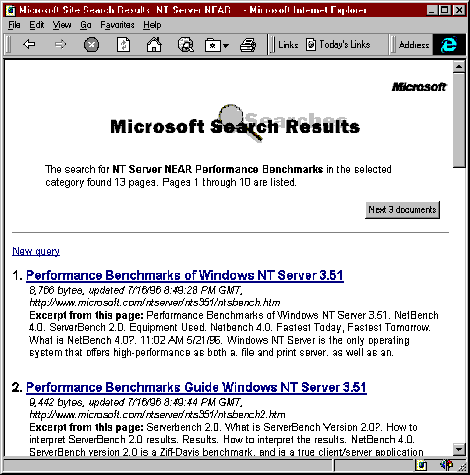
Index Server packages query hits into result sets which are returned to the client. For example, a 200-item result set may be retrieved by the client in 10 pages of 20 hits each. The form may allow the client to specify the number of hits to retrieve per page.
The administrator can limit the maximum number of hits. The result set tells the system what to do after it has found the documents, such as returning the author, the file name, the path, and modification time of the document. A well-formed query might be: "Look in my C drive for all Word documents that contain the phrase "Windows NT 5.0 White Paper" and it would return the author, path, file size, and modification date. There are additional elements a user can specify on a query, such as sort order. Index Server can rank hits in a result set based on the quality of the hits (the hit "rank").
If the corpus is stored on an NTFS volume, the system respects all security restrictions, and access control list (ACL) checking is performed. Users can never see a document reference in a result set if the ACL on that object prohibits them from reading it.
The client may specify the property data to return in a result set (the columns in the result set). Any property that is valid in a query restriction is valid as a result column. The administrator can control the properties returned by a query in designing the results page. In addition to returning properties stored with the document, the system can generate document "abstracts" which may also be returned in a result set. An abstract is simply a document summary to give the client some idea of what a particular document is about. The document abstract can also be part of a query restriction.
Results may be sorted using any property, although a descending sort by rank is most common. The result set generated by the query form in Figure 1 is shown in Figure 3.

Figure 3 - Sample Query Results